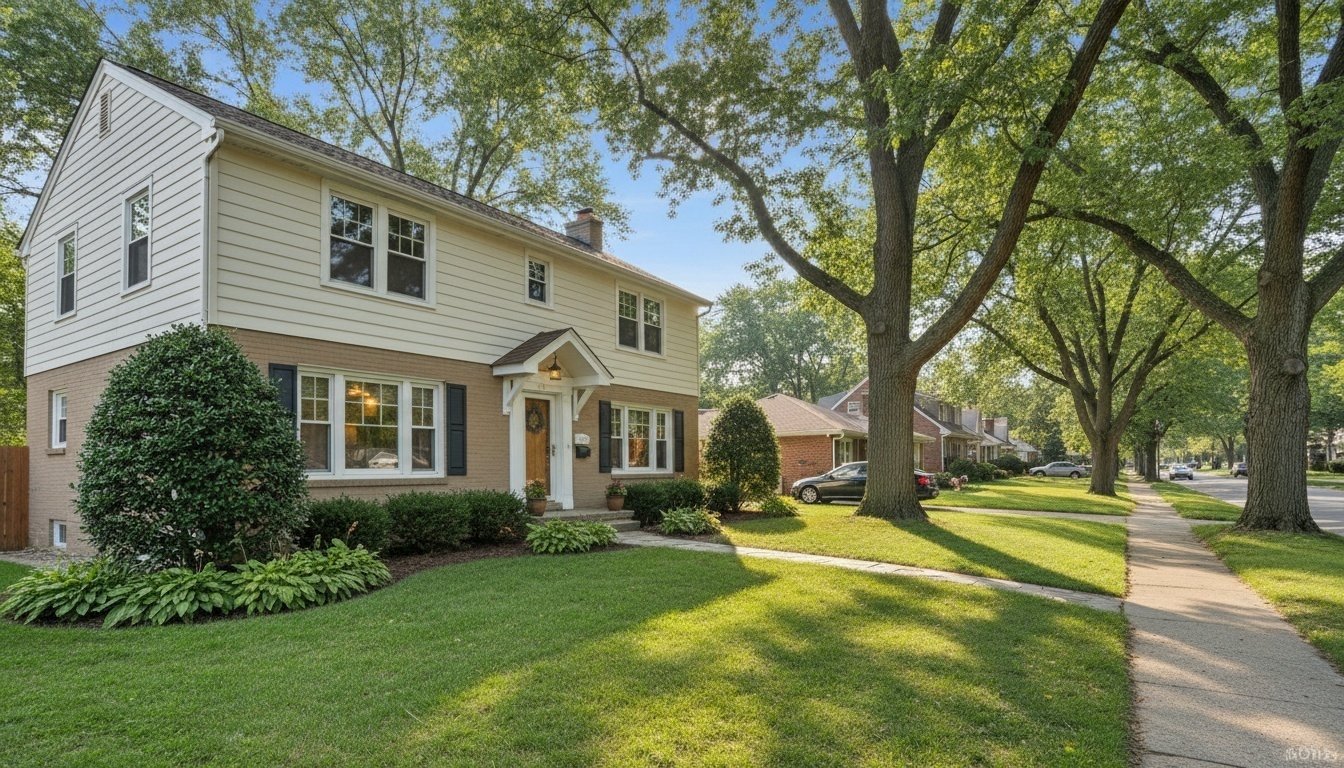Consider a 100-room property built in the middle of a desert. How could such a place have any value? It depends on the location of the desert. If that 100-room property were the Hotel Nevada, the first hotel built in 1906 in what would become Las Vegas, it would be a property with a great deal of value.
Nowadays, a piece of land in that same Mojave Desert is worth tens of millions of dollars if it happens to be on the world-famous Las Vegas strip. But go 20 miles out of town past all areas of development where there are no services, and the acreage is nearly worthless.
The above proves why location is one of the most important factors in determining a property’s value. A good property location consists of multiple factors. Paying attention to such factors can help investors and owners find the right property to meet their particular goals and objectives.
Factors Determining a Good Location
The most-desired features in a location can include nearby amenities, safety, accessibility, neighborhood composition, and future development. Let's take a closer look.
Amenities
Amenities are those extras that make a particular location more appealing. Depending on the property in question, amenities can include schools, parks, shopping, restaurants, and entertainment. Education is also high on the amenities list; a good school district is a top priority for families. Even those without children like knowing that good schools are nearby, as this can enhance a property’s resale value. The same holds true for homes near colleges and universities. Property values tend to be higher in these areas. This trend is
Another consideration that increases the value of real estate is being near quality healthcare facilities. Americans are, on average, getting older, and many need regular access to healthcare services. Proximity to hospitals, clinics, and pharmacies is particularly important for seniors and families with young children.
Other popular amenities are fitness centers, community centers, gyms, spas, and wellness centers. Walkability, especially along a waterfront, around areas with scenic views, or even in the local shopping district, can also be a highly sought-after amenity.
.jpg?width=1800&height=942&name=Untitled%20design%20(69).jpg)
Safety
Very few people want to own property in troubled communities. Crime and vandalism reduce a property's value and lead to questions of protection, no matter how lovely or charming a home in the area might be. Defending property in such a situation is a significant challenge.
On the other hand, having property in a safe location with low crime is desirable. If that property is near a police station or fire department, so much the better, as access to emergency services is an added benefit. Along those lines, active community policing through volunteer neighborhood watch programs is a plus, as such organizations can reduce crime and improve a community's reputation. Also discouraging nighttime crime are bright lighting and well-lit parks and streets.
Another important form of safety is traffic safety. A property should be in a neighborhood with adequate and well-maintained streets offering low-speed zones, speed bumps, crosswalks, proper traffic signals, bike lanes, pedestrian safety markers, and other protection measures.
Fire, flood, hurricane, tornado, earthquake, and other natural disasters can also impact location safety and, by extension, property values. For example, homes in certain regions can't afford insurance due to increased climate-change hazards like severe weather and wildfires. This can lead to a decline in property value, as a potential home buyer can't qualify for a mortgage without having homeowners insurance. So, while having a gorgeous beachfront house in Florida might seem nice, an increase in damaging hurricanes (and a decrease in homeowner insurance providers) means it might not make this a desirable location.
Then there is environmental safety. It isn't good if the above-mentioned gorgeous home is situated downwind of a smelly oil refinery. In addition to air pollution, soil and groundwater issues could also exist. Along those lines, sellers must disclose these and other risky issues.
Accessibility
In urban areas, proximity to trains, buses, subway stations, and other transportation helps make a property more attractive. Furthermore, while it's great to use public transportation to get to the airport quickly, nobody wants to live close to it due to the noise and pollution.
Neighborhoods near business districts, tech hubs, or areas with major employers attract higher property values. Easy commutes are a considerable draw for working professionals. In fact, proximity to offices and co-working spaces is a plus when it comes to tech cities and regions with big business centers. Walking or riding a bicycle to work is desirable for most techies.
In some cities, parking is a significant challenge. Having easy-to-access parking increases a property’s value. Homes with attached garages or ample parking space are more convenient for families, the elderly, and anyone with mobility challenges.
Neighborhood Composition
Neighborhood composition may significantly influence real estate values. A nice neighborhood attracts buyers and investors. In addition, neighborhoods with professionals and highly educated residents often enjoy increased demand and property values. These prime locations represent economic stability and create a sense of shared community pride. A neighborhood where homes are well-kept, lawns are manicured, and public spaces like parks and streets are maintained shows pride of ownership and encourages higher real estate prices. A community with a strong, stable, and upwardly mobile population may increase demand and property values.
Many neighborhoods are undergoing revitalization, with formerly rundown areas being replaced with more attractive buildings, green spaces and other amenities. Those communities experiencing gentrification can experience rapid increases in property values as new businesses, upgraded infrastructure and increased investment attract wealthier buyers.

Exterior design can also make a difference. Having a consistent and attractive architectural style, such as a historic district or riverwalk, is appealing. This uniformity creates a sense of exclusivity that translates into higher market value.
At the same time, neighborhoods offering various housing types, like single-family homes, condos, townhouses, and apartments attract different buyers, from first-time homebuyers to retirees. Furthermore, diverse neighborhoods are vibrant and culturally rich and can attract a broader range of buyers while boosting an area’s appeal. Diversity in restaurants, cultural events, and community activities adds to the neighborhood’s value. These neighborhoods have a lot of character and are proud to show it.
Also appealing are communities with mixed-use developments. These offer residential, commercial and recreational spaces (shops, restaurants, offices and parks) close to each other, generating potentially higher property values. Mixed-use neighborhoods offer convenience and create lively, attractive environments, especially when designed to be a live/work setting.
Finally, green spaces in urban environments can also go a long way toward boosting the attraction of a location. Green spaces, like pocket parks, promote a healthier, more enjoyable lifestyle, attracting buyers who appreciate this trend and increasing a property’s appeal.
Future Development
Future development can create a positive or negative impact on property values. Owning a piece of property next to a soon-to-be-built industrial chemical plant, which will produce toxic and unpleasant air pollution, is a negative. While it can boost jobs in the area, this new plant is not a value creator. However, being next to an assembly plant making electric vehicles in a non-polluting way could boost your property’s value, especially if thousands of new workers coming to the area want a home near the plant’s location.
Here are ten ways future development may increase your property’s value:
- Urban Revitalization – Plans to revitalize run-down areas or redevelop neglected urban spaces often lead to higher property values.
- Infrastructure Projects – New roads, bridges, or highway improvements can drastically enhance a neighborhood’s connectivity, making it more accessible and attractive to buyers.
- Parks Development – The planned construction of new parks, recreational areas or bike paths can improve property values.
- Retail Developments – Future shopping centers, retail complexe, and dining districts attract buyers and raise property values.
- Public Transportation – The announcement of new bus routes, rail systems or other forms of public transport makes it easier for people to get around, potentially leading to an increase in property values.
- Tech Hubs – A tech hub that attracts major employers increases the demand for nearby housing, increasing property values.
- Zoning Changes – Future changes in zoning laws that allow for new types of development can cause a surge in demand as more buyers look to invest in the area.
- Environmental Sustainability – Future development focused on sustainability, such as eco-friendly housing, renewable energy projects or green infrastructure, can drive property demand and prices.
- Mixed-Use Development – The rise of mixed-use developments where residential, commercial and recreational spaces can improve area real estate values.
- Cultural or Arts District Development – Creating cultural hubs, such as museums, theaters or art galleries, attract more visitors, adding to the "bustle" of an area. This can make a community an attractive target for investment.
Location is Just as Important as the Property
When searching for a property to live in or as an investment, the asset's condition is important. Just as essential is understanding the property's location. Before taking ownership of a house or other property, do your research on the viability of the community and how it could increase that asset's value.
One way to learn more about your target property's location is with data from PropertyReach. Our proprietary platform allows you to select specific neighborhood and community criteria, meaning you can analyze a location's impact on property value. Depend on PropertyReach to provide multpile analytistcs to help you make the right decision. To learn more, or to sign up for a seven-day free trial, visit PropertyReach today.

